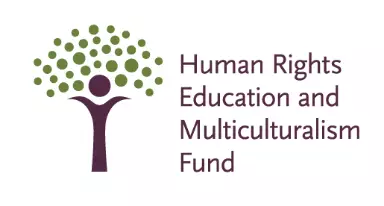
Donate to the Linda McKay-Panos Scholarship Fund

Donate to the Linda McKay-Panos Scholarship Fund
Photo: flickr/ The UpTake
Across Canada we have seen many developments in GLBT rights in the past few years. With the legal recognition of same-sex marriage, we might have thought that true equality for same-sex families had been reached. However, some of our provincial family laws have not kept up to these legal changes. In particular, in some provinces, when married gay or lesbian partners have a child, the non-birth parent(s) must legally adopt the child before they have any status as parents.

By Linda McKay-Panos
This blog article originally appeared in LawNow Vol. 40(6 ), 2016 and is reprinted with permission.
Across Canada we have seen many developments in GLBT rights in the past few years. With the legal recognition of same-sex marriage, we might have thought that true equality for same-sex families had been reached. However, some of our provincial family laws have not kept up to these legal changes. In particular, in some provinces, when married gay or lesbian partners have a child, the non-birth parent(s) must legally adopt the child before they have any status as parents. The example given in discussion surrounding a recent Ontario case, Grand v (Ontario) Attorney General, 2016 ONSC 3434, follows.
Two married women partners are at the hospital. One partner, Djos, is haemorrhaging after giving birth. The child was conceived with sperm donated by a family friend. Grand, the non-biological mother, is struck with the horrible thought that the child is not legally hers, as she is required under law to adopt the child first. Also, the current vital statistics legislation will not permit her to be listed as a parent. This means that if something terrible were to happen to her wife, the child could not legally go home with Grand. Fortunately, Djos survives, and Grand hires a lawyer to help with the adoption of the baby a few weeks later.
If we assume the objective of the Vital Statistics Act is to make accurate and timely recording of births, and this is pressing and substantial, there is no rational connection between the objective and the means chosen; recognizing lesbian co-mothers need not be done to the exclusion of collecting accurate biological information.Compare the situation of a married heterosexual couple—also conceiving through the use of assisted conception (sperm donor). Under existing law in some provinces, the male partner is presumed to be the child’s parent, and is able to be recorded as a parent under vital statistics law. He is no more of a biological parent than is Grand. Yet, he does not have to adopt the child in order to be considered the child’s parent. Thus, while same-sex parties have equal marriage rights, they do not have equal parenting rights.
In 2006 several couples challenged this situation in Ontario in MDR v Ontario (Deputy Registrar General, (2006), 81 OR (3d) 81 (SCJ)(“MDR”). Lesbian parents whose children were conceived through reproductive technology sought to have the names of both mothers listed on the Statement of Live Birth under the Ontario Vital Statistics Act RSO 1990. The existing Vital Statistics Act only permitted the listing of one mother and one father. At the same time, non-biological fathers of children conceived through reproductive technology were permitted to have their names listed as parents on the Statement of Live Birth. The Court noted that the only solution for lesbian co-mothers was to proceed to adopt the child or to go to court to obtain a declaration under the Children’s Law Reform Act.
The Ontario Superior Court of Justice held that the Vital Statistics Act violated the Canadian Charter of Rights and Freedoms (“Charter”) section 15(1). Lesbian co-mothers who plan a pregnancy with their spouse using reproductive technology were compared to heterosexual non-biological fathers who plan a pregnancy with their spouse using reproductive technology. Lesbian mothers were discriminated against on the basis of sex and sexual orientation. The children of these two groups were denied presumptive proof of parentage, and this was discriminatory too. The Court held that the discrimination was not saved by Charter s 1. If we assume the objective of the Vital Statistics Act is to make accurate and timely recording of births, and this is pressing and substantial, there is no rational connection between the objective and the means chosen; recognizing lesbian co-mothers need not be done to the exclusion of collecting accurate biological information. Further, the government has means that are less minimally impairing of the rights of lesbian co-parents, yet still maintain the record of the biological particulars of parentage. Both sets of information could be captured. The benefit to the government of refusing to register lesbian co-parents would be an increase in the accuracy of biological information in the system. On the other hand, the deleterious effects on lesbian co-parents include the pain and hardship that actually goes to their essential dignity. The Vital Statistics Act, s 9, was struck down, with the Court allowing a delay of 12 months for the declaration of invalidity, to give the government the opportunity to remedy the constitutional defects.
Thus, while same-sex parties have equal marriage rights, they do not have equal parenting rights.
Perhaps in response to this decision, Ontario amended the Vital Statistics Act in 2007 to allow an “other parent” to certify a birth statement, if the child’s mother acknowledges him or her. The provisions apply in any case of assisted conception other than sexual intercourse, but only if the biological father is unknown. Where the biological father is a known sperm donor, a non-biological parent cannot be included on the registration. This does not address the difficulties faced by same-sex families in the above-noted situations.
It is possible to amend family legislation to address these circumstances. Comparable family laws in British Columbia, Alberta, Manitoba and Quebec have already made changes to their birth registration legislation. See: Jane Taber “Ontario legislation will grant equal rights to same-sex parents” 31 May 2016 The Globe and Mail.
In Grand v (Ontario) Attorney General, a group of LGBT families launched a second Charter challenge, alleging that the Ontario government has been too slow to react to the decision of 2006. In addition, the individuals involved in the 2006 law case, and others in the same circumstances, pressured the government to make the changes suggested in 2006. Private Members’ Bill 137, was introduced in Ontario’s Parliament in late 2015, and has passed first and second reading. It is called “Cy and Ruby’s Act”. It is apparently stalled at the committee stage (see: Alyshah Hasham “Same-sex parents still struggling for legal recognition” Toronto Star 24 May 2016, online.
The Ontario Attorney General explained that the delay in passing the Bill is in the wording of the Bill, which needs to be “re-worked” (see: Jane Taber “Ontario legislation will grant equal rights to same-sex parents” 31 May 2016 The Globe and Mail online.
Since there are models that are working in several other provinces, perhaps Ontario should consider consulting these models in order to speed up the process of enabling families in Ontario to have the same rights. It probably should not take ten years to fix the problem identified by the Ontario Court.




2500 University Drive NW
Calgary, AB T2N 1N4
(403) 220-2505
aclrc@ucalgary.ca